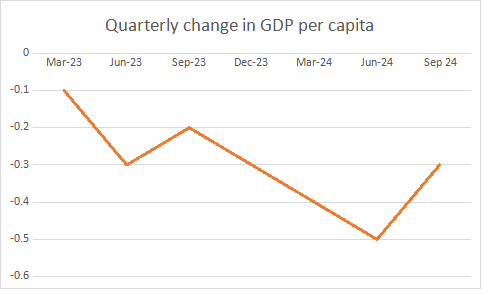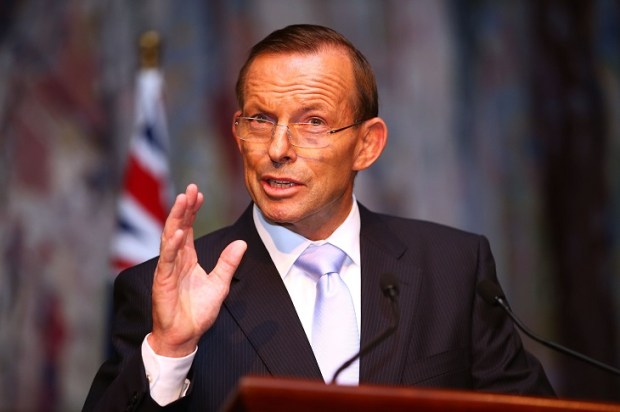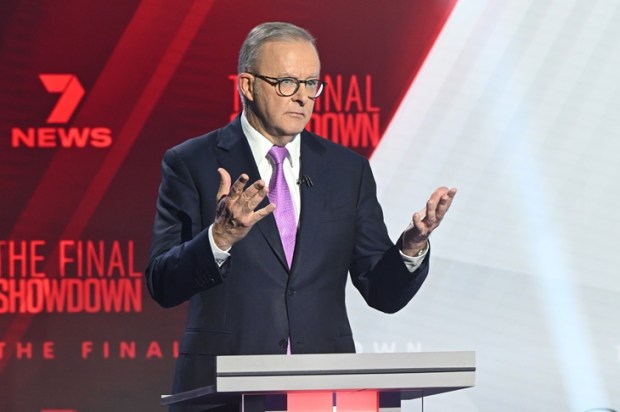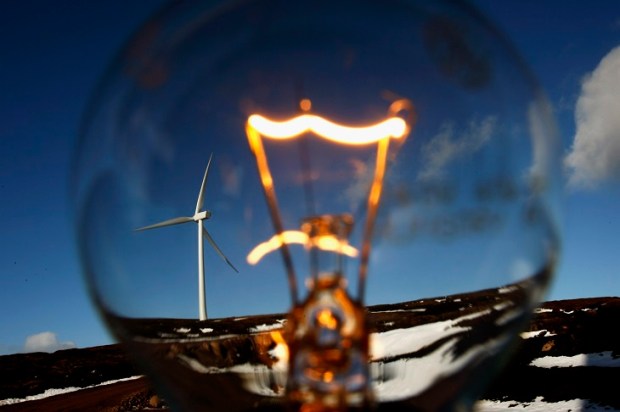It is difficult to overstate the economic disaster that the National Accounts data is progressively revealing. The headline figures show income per capita levels that have been diminishing for each of the past seven quarters.

Tragically the Treasurer appears to be unaware of the cause of this – and that is also likely to be the case with his departmental advisers, who have been nurtured on Keynesian economics where every dollar spent by the government is counted as an additional dollar of domestic income. In fact, it is high levels of investment that is the basis for the wealth that brings income. Increased government spending is almost certain to diminish wealth.
Underlying Australia’s fall in real levels of income is a reduction in new investment. This had been in relative decline for many years prior to the May 2022 incoming Labor government in Canberra. Since then, new investment, especially the more productive customer-focused private investment, has been plummeting.
A fall in new investment is always predictable where there is government incompetence and mismanagement. The Commonwealth government (and that of some ALP states) is fixated upon using whatever wealth it can take in order to reward key constituencies. Private sector profits are a particularly tempting target.
We have seen a four percentage point rise in government spending share to over 28 per cent over the last decade. In itself, this has eaten into available funding. Coupled with this, governments, state as well as federal, have aggressively pursued regulatory inhibitory action on new projects thereby raising costs and uncertainly. Inevitably, this brings a fall in the real return in investment and hence lower aggregate investment. That process would be exacerbated over coming years under a Commonwealth ALP government since the Treasurer has foreshadowed an indefinite period of deficit financing – borrowing from a future that is likely to be less prosperous as a result of the associated government.
But the malaise is aggravated by government forcing a large proportion of investment capital into areas that provide negative benefits. It threatens to do more of this with a new winner-picking R&D policy.
At present, this is most evident in the component of what is classed as private business investment in ‘clean energy’: windmills and solar farms. Based on the latest quarter, the Clean Energy Council, we can predict this to be running at over $13 billion a year. Added to this is the rooftop solar installations, which the Clean Energy Regulator estimates at 3.1 Gigawatts this year, costing (pre rebate) over $4 billion.
So, even before additional transmission costs are counted, and assuming a similar rate for each quarter, that means over $17 billion a year being spent on renewable energy facilities – equivalent to about 14 per cent of business investment.
This is more than wasteful. It is harmful. The expenditure is no more real investment than is Ukrainian expenditure on 10,000 drones a month to grind down Russia’s oil refining capacity, or Russia’s annual spending on three million artillery shells to destroy Ukraine’s infrastructure.
Not only does renewables energy spending cannibalise available resources but the spending itself (all of it possible only because of government subsidy) displaces otherwise profitable productive coal and gas capital. And, as can be seen in the higher energy costs we are experiencing, displacing coal and gas brings reverberations in costs throughout the economy. This impacts directly on consumers and indirectly in terms of international competitiveness – Australia more than other countries relied upon low-cost energy as the key to attracting secondary industry.
Sadly, although the Commonwealth Labor government will not survive the election next year, turning things around will not be easy.
Unlike in the US, there is no Department of Government Efficiency with outstanding leadership determined to pare regulations and the size of government. The Coalition is following a me-too-but-lighter approach. Even its energy policy refuses to adopt the Trumpian rejection of carbon taxes and quasi-taxes (over $16 billion a year in Australia’s case) that underpin the existing retreat from low-cost energy.
The Opposition is focused on nuclear, a fine source of reliable electricity for those nations without our own splendid coal and gas resources. But, while far superior to the inevitably unreliable renewables, nuclear is a source that would mean wholesale electricity prices at least twice as expensive as those available from new and refurbished coal-generating electricity plant. Nuclear could never allow Australia to generate electricity at a price that once made us a global aluminium powerhouse and would mean a reduced prominence in a range of energy-intensive primary and secondary industries.
Perhaps with a revived US providing a model for future policy, we will see better options being brought forward but the timid approach adopted by the dominant forces within the Opposition condemns Australia to years of poor performance.

























